Comments / Questions (4)
![]() Cornelia wrote:
Cornelia wrote:
Hello, my son who is now 14 yrs old would like me to knit this sweater for him, but would like a size bigger that 14 as he wants to be able to wear the sweater next year also. Could you help me figure out the math for a bigger size than what you have offered in the pattern? Thank you
03.11.2024 - 21:14DROPS Design answered:
Dear Cornelia, we don't make custom patterns but you can do a "rule of three" to calculate the pattern for a larger size, according to your gauge and desired measurements; here is a lesson on how to calculate it: https://www.garnstudio.com/lesson.php?id=25&cid=19. You can also use the sweater version for men in the smallest size as a guide; you can see it here: https://www.garnstudio.com/pattern.php?id=10555&cid=19. Happy knitting!
03.11.2024 - 22:38
![]() Nikki wrote:
Nikki wrote:
Kan ik deze trui ook breien met Drops Karisma? Zo ja, hoe moet ik het garen dan uitrekenen? Alvast bedankt!
30.09.2023 - 21:33DROPS Design answered:
Dag Nikki,
DROPS Karisma valt in garencategorie B en is dus dunner, waarmee het een andere stekenverhouding heeft. Om een garen te vervangen kun je het beste in dezelfde garencategorie blijven.
03.10.2023 - 06:09
![]() Verena wrote:
Verena wrote:
Hallo liebes Drops Team, liegt es nur bei mir? Oder kann nur ich das Muster zum stricken des Weihnachtbaums nicht sehen? LG Verena
21.12.2021 - 12:56DROPS Design answered:
Liebe Verena, das Diagram kann ich sehen, leeren Sie den Cache und versuchen Sie noch mal - oder versuchen Sie mit einem anderen Browser. Viel Spaß beim stricken!
21.12.2021 - 15:43
![]() Marie wrote:
Marie wrote:
Bonjour je suis entrain de faire le Christmas Kal. Dans le modèle vous conseillez de diviser par le nombre d’augmentation par le nombre de mailles sur l’aiguille afin de répartir équitablement les augmentations. J’ai 68 mailles sur mes aiguilles et je dois faire 10 augmentations, afin d’obtenir 78 mailles pour le diagramme. Hors 68/10 = 6,8 Je ne peux donc faire les augmentations de façon à ce qu’elles soient juste. Comment faire ?
12.11.2021 - 22:28DROPS Design answered:
Bonjour Marie, cette leçon explique comment répartir des augmentations (ou diminutions) en fonction du résultat et devrait vous aider à placer ainsi vos augmentations. Bon tricot!
15.11.2021 - 07:16
Merry Trees#merrytreessweater |
||||||||||||||||
 |
 |
|||||||||||||||
Knitted Christmas jumper and hat for children in DROPS Air. The jumper is worked top down with round yoke and Christmas tree pattern. The hat is worked in the round, bottom up. Sizes 2 - 14 years. Theme: Christmas.
DROPS Children 41-17 |
||||||||||||||||
|
------------------------------------------------------- EXPLANATIONS FOR THE PATTERN: ------------------------------------------------------- INCREASE/DECREASE TIP (evenly spaced): To work out how to increase/decrease evenly, count the total number of stitches on needle (e.g. 60 stitches), and divide by the number of increases/decreases to be made (e.g. 6) = 10. In this example, increase by making 1 yarn over after each 10th stitch. On the next round knit the yarn overs twisted to avoid holes. When decreasing, knit together each 9th and 10th stitch. PATTERN: See diagram A.1. Choose the diagram for your size. The pattern is worked in stocking stitch. KNITTING TIP: To avoid the garment losing its elasticity when working pattern, it is important that the strands at the back are not tight. Use a larger size needle when working pattern if the piece becomes tight. DECREASE TIP-2 (for sleeves): Decrease 1 stitch on either side of the marker thread as follows: Work until there are 3 stitches left before the marker thread, knit 2 together, knit 2 (marker thread sits between these 2 stitches), slip 1 stitch as if to knit, knit 1 and pass the slipped stitch over the knitted stitch. DECREASE TIP-3 (for hat): Work until there are 2 stitches left before the marker, knit 2 together (= 1 stitch decreased). Repeat at each marker. CASTING-OFF TIP: To avoid the cast-off edge being tight you can cast off with a larger size needle. If the edge is still tight, make 1 yarn over after approx. each 4th stitch at the same time as casting off; the yarn overs are cast off as normal stitches. ------------------------------------------------------- START THE PIECE HERE: ------------------------------------------------------- JUMPER – SHORT OVERVIEW OF THE PIECE: The neck and yoke are worked in the round with circular needle, from mid back and top down. The yoke is divided for body and sleeves and the body is continued in the round with circular needle. The sleeves are worked with double pointed needles/short circular needle, top down. NECK: Cast on 60-64-64-68-68-72-76 stitches with double pointed needles/short circular needle size 4 mm and raspberry DROPS Air. Knit 1 round. Then work rib in the round (knit 2, purl 2) for 3 cm. Change to circular needle size 5 mm. YOKE: Insert 1 marker at the beginning of the round; the yoke is measured from this marker! Knit 1 round where you increase 6-8-14-10-16-12-14 stitches evenly spaced – read INCREASE/DECREASE TIP = 66-72-78-78-84-84-90 stitches. Now work according to diagram A.1 (= 11-12-13-13-14-14-15 repeats of 6 stitches). NOTE! Choose diagram for your size. Read KNITTING TIP! REMEMBER THE KNITTING TENSION! When A.1 is finished in height there are 176-192-208-208-224-224-240 stitches. Knit 1 round with raspberry where you decrease 4-8-12-8-12-4-8 stitches evenly spaced = 172-184-196-200-212-220-232 stitches. Continue with stocking stitch and raspberry until the yoke measures 15-15-16-17-18-19-20 cm from the marker. Now divide for the body and sleeves: Knit 25-27-29-30-32-33-34 (= half back piece), place the next 36-38-40-40-42-44-48 stitches on 1 thread, cast on 6 stitches (= in side under sleeve), knit 50-54-58-60-64-66-68 (= front piece), place the next 36-38-40-40-42-44-48 stitches on 1 thread, cast on 6 stitches (= in side under sleeve), knit the last 25-27-29-30-32-33-34 stitches (= half back piece). The body and sleeves are finished separately. THE PIECE IS NOW MEASURED FROM HERE! BODY: There are now 112-120-128-132-140-144-148 stitches on needle. Continue in the round with stocking stitch and raspberry for 16-20-23-25-26-27-28 cm (or to desired length; there is approx. 3-3-3-4-4-4-4 cm left to finished length). Change to circular needle size 4 mm. Work rib (knit 2, purl 2) for 3-3-3-4-4-4-4 cm. Loosely cast off with knit over knit and purl over purl – CASTING-OFF TIP. Cut and fasten the strand. The jumper measures approx. 36-40-44-48-50-52-54 cm from the shoulder down. SLEEVES: Place the 36-38-40-40-42-44-48 stitches from the thread on the one side of the piece on double pointed needles/short circular needle size 5 mm and knit up 1 stitch in each of the 6 stitches cast on under the sleeve = 42-44-46-46-48-50-54 stitches. Insert a marker thread in the middle of the 6 stitches under the sleeve. Allow the thread to follow your work onwards; it will be used when decreasing under the sleeve. Start at the marker thread and work stocking stitch in the round, with raspberry, for 3 cm. Now decrease 2 stitches under the sleeve – read DECREASE TIP-2. Decrease like this every 3-5-6-7-8-9-10 cm a total of 4 times = 34-36-38-38-40-42-46 stitches. Continue working until the sleeve measures 15-20-24-26-30-34-37 cm from the division. There is approx. 3-3-3-4-4-4-4 cm left to finished length; try the jumper on and work to desired length. Knit 1 round where you increase 6-4-6-6-4-6-2 stitches evenly spaced = 40-40-44-44-44-48-48 stitches. Change to double pointed needles size 4 mm. Work rib (knit 2, purl 2) for 3-3-3-4-4-4-4 cm. Cast off with knit over knit and purl over purl – remember CASTING-OFF TIP! The sleeve measures approx. 18-23-27-30-34-38-41 cm from the division. Work the other sleeve in the same way. KNOT: Make a knot at the top of each tree. Cut 2 strands of yellow, each 10 cm long. Put the strands together and thread them through the top yellow stitch on each tree, with both ends on the right side. Tie a knot, then another knot in the opposite direction – see sketch. Cut the strands leaving 1 cm ends. ------------------------------------------------------- HAT – SHORT OVERVIEW OF THE PIECE: The piece is worked with circular needle, in the round and bottom up. Change to double pointed needles when necessary, after decreasing stitches at the top. HAT: Cast on 96-100-104-108-112 stitches with circular needle size 3.5 mm and off-white DROPS Air. Purl 1 round. Then work rib in the round (knit 2, purl 2) for 4-5-5-6-6 cm. Change to circular needle size 4.5 mm and knit 1 round where you decrease 12-12-12-12-12 stitches evenly spaced – read INCREASE/DECREASE TIP = 84-88-92-96-100 stitches. Change to raspberry and continue with stocking stitch. REMEMBER THE KNITTING TENSION! When the piece measures 18-19-19-19-20 cm from the cast-on edge, decrease 0-4-2-0-4 stitches evenly spaced = 84-84-90-96-96 stitches. Insert 6 markers with 14-14-15-16-16 stitches between each one. On the next round decrease 1 stitch before each marker – read DECREASE TIP-3 (= 6 stitches decreased). Decrease like this every 2nd round a total of 2-2-2-3-3 times. Then every 6th-7th-7th-7th-7th round 10-10-11-11-11 times = 12 stitches. Work until the hat measures 50-52-54-56-58 cm, then knit all stitches together 2 and 2 = 6 stitches. Cut the strand and pull it through the remaining stitches, tighten and fasten well. POM-POM: Make a pom-pom of 5 cm in diameter with off white. Sew it to the top of the hat. |
||||||||||||||||
Diagram explanations |
||||||||||||||||
|
||||||||||||||||

|
||||||||||||||||
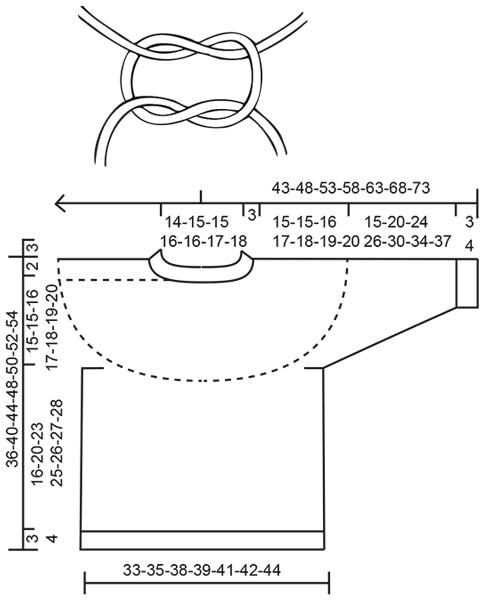
|
||||||||||||||||
Have you finished this pattern?Tag your pictures with #dropspattern #merrytreessweater or submit them to the #dropsfan gallery. Do you need help with this pattern?You'll find 32 tutorial videos, a Comments/Questions area and more by visiting the pattern on garnstudio.com. © 1982-2025 DROPS Design A/S. We reserve all rights. This document, including all its sub-sections, has copyrights. Read more about what you can do with our patterns at the bottom of each pattern on our site. |
||||||||||||||||







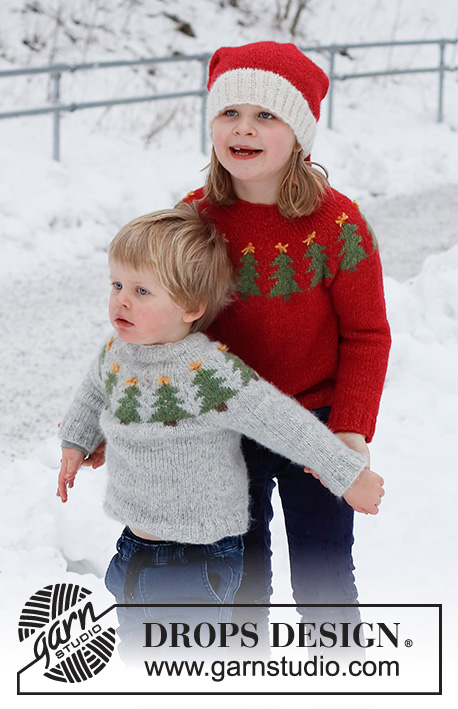
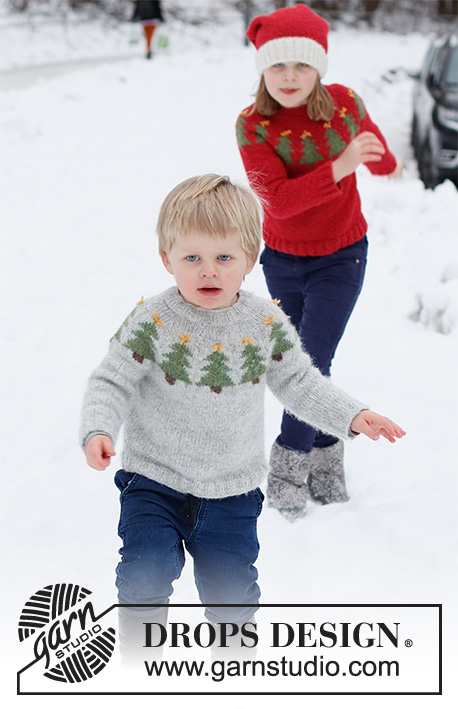
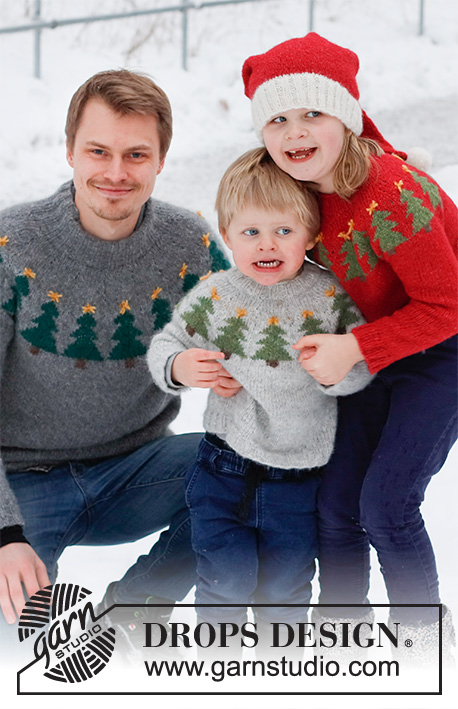

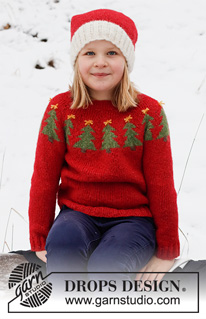
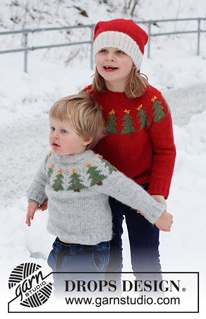
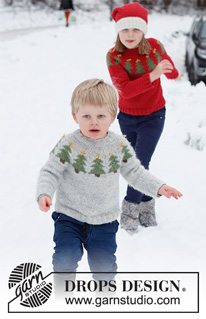
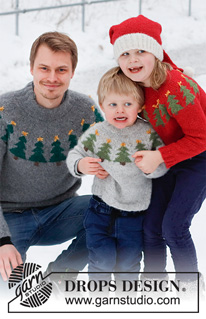










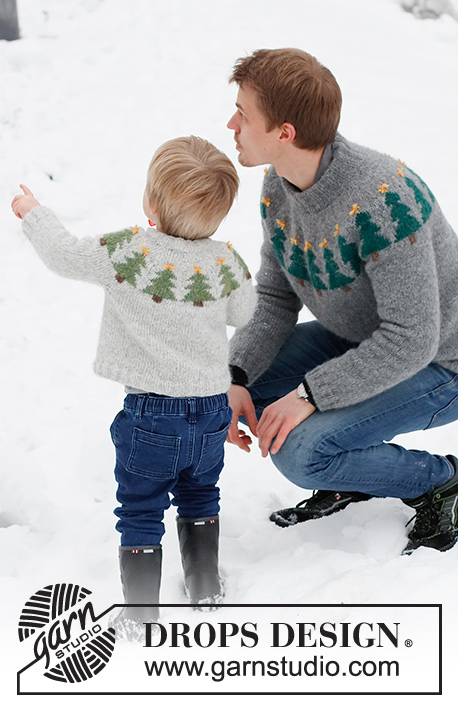





















































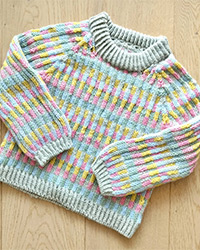
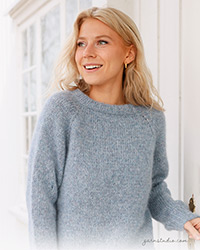


Post a comment to pattern DROPS Children 41-17
We would love to hear what you have to say about this pattern!
If you want to leave a question, please make sure you select the correct category in the form below, to speed up the answering process. Required fields are marked *.